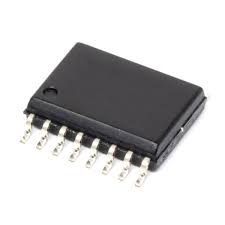DG212DY
The DG202/DG212 are normally open, quad singlepole single-throw (SPST) analog switches. These
CMOS switches can be continuously operated with
power supplies ranging from ?4.5V to ?18V. Maxim
guarantees that these switches will not latch up if the
power supplies are disconnected with input signals still
connected
DG302ACJ
Maxim?s DG300?DG303 and DG300A?DG303A CMOS
dual and quad analog switches combine low power
operation with fast switching times and superior DC and
AC switch characteristics. On-resistance is less than
50? and is essentially constant over the analog signal
range. Device specifications are ideal for batterypowered circuitry.
These switches are available in a variety of formats as
outlined in the Pin Configurations section. The switch
control logic inputs are fully TTL and CMOS compatible. Also featured are ?break-before-make? switching
and low charge injection.
DG408DY-T1-E3
The DG408 is an 8 channel single-ended analog multiplexer
designed to connect one of eight inputs to a common output
as determined by a 3-bit binary address (A0, A1, A2). The
DG409 is a dual 4 channel differential analog multiplexer
designed to connect one of four differential inputs to a
common dual output as determined by its 2-bit binary
address (A0, A1). Break-before-make switching action
protects against momentary crosstalk between adjacent
channels.
DG411DJ
Maxim?s redesigned DG411/DG412/DG413 analog
switches now feature low on-resistance matching
between switches (3? max) and guaranteed on-resistance flatness over the signal range (?4? max). These
low on-resistance switches conduct equally well in
either direction. They guarantee low charge injection,
low power consumption, and an ESD tolerance of
2000V minimum per Method 3015.7. The new design
offers lower off-leakage current over temperature (less
than 5nA at 85?C).
DG411DY
? Plug-In Upgrade for Industry-Standard
DG411/DG412/DG413
? Improved RDS(ON) Match Between Channels
(3? max)
? Guaranteed RFLAT(ON) Over Signal Range (?4?)
? Improved Charge Injection (10pC max)
? Improved Off-Leakage Current Over Temperature
(< 5nA at 85?C)
? Withstand Electrostatic Discharge (2000V min)
per Method 3015.7



















